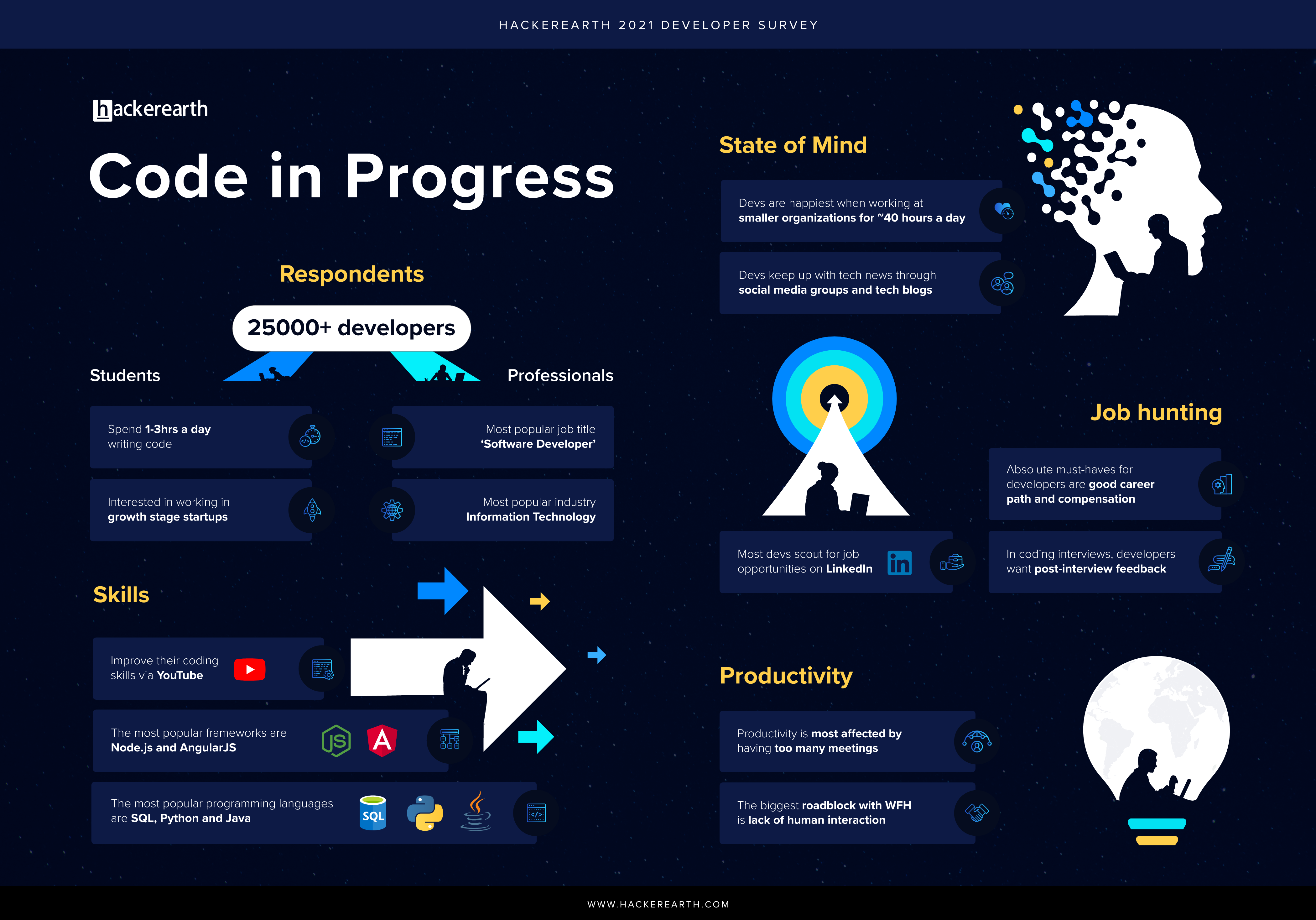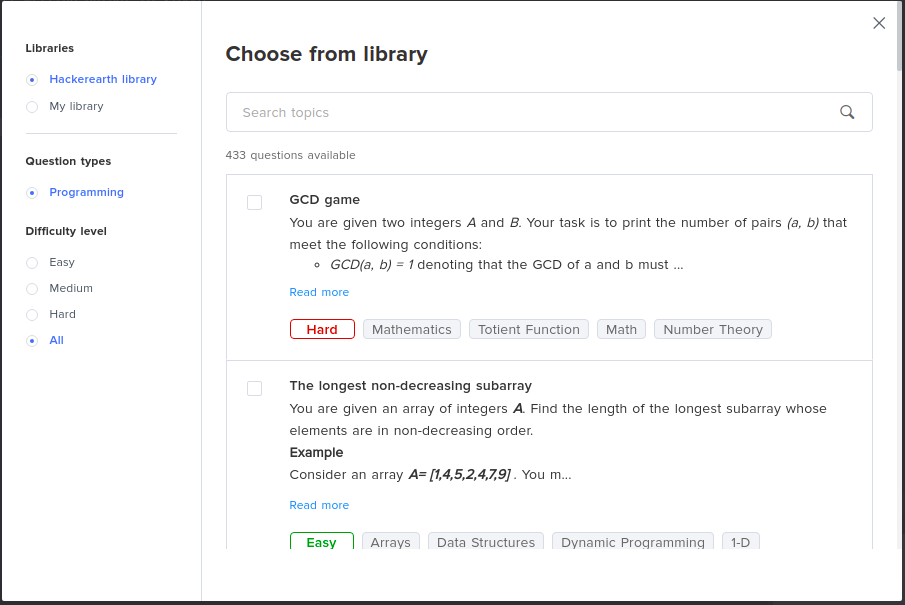In May this year the global banking giant Credit Suisse reported that it would hire more than a thousand developers from India, making our country a base for global innovation, and home to over 25% of its tech workforce. I recount this statistic to underscore how over the last two decades, India has emerged as the largest pool of tech talent in the world.
The developer community grows exponentially year on year, and from playing a supporting role for other industries, we have now graduated to the forefront of developing cutting-edge technologies and innovative applications that will power the future. To sustain this momentum, we must understand the secret of creating a future-ready tech community lies in how we support and educate them.
Let’s take another example - that of a data scientist, since this is a role currently in demand. An undergraduate student studies a plethora of courses in their four years, and dedicates only a semester or so studying core AI and Data Science topics. At work, they are expected to ace complex business problems with just a few months’ of knowledge. Needless to say, it is tough.
Many data scientists end up using online resources, certification programs, and practice platforms like Kaggle to upskill themselves on their own. This conclusively proves that the content of current engineering curriculums is nowhere it needs to be.
The aim of education and training, therefore, should be to create a new generation of coders who are not only great programmers but are also well-adapted to a changing world of remote work and rapid growth, which demands innovation even amid a crisis. Geography is no barrier to learning anymore, and skills are the only currency in this new normal. Our education systems must adapt, pronto.
****
As originally published in The Hindu Business Line.
The developer community grows exponentially year on year, and from playing a supporting role for other industries, we have now graduated to the forefront of developing cutting-edge technologies and innovative applications that will power the future. To sustain this momentum, we must understand the secret of creating a future-ready tech community lies in how we support and educate them.
With the continuous evolution of technology, devising education curricula that keep up with advancements becomes imperative.
When I was in college, we used hard disks and CDs for storing code. The first thing I learnt during my internship was how to store code in a code base and the importance of checking in to a central repository. I hadn’t heard of GitHub till then.This is but a small example, to showcase the gap between what coders are taught in professional institutions and what their work environment demands of them. In today’s startup culture where the learning curve is extremely steep and coders are expected to be shipping code as soon as they join work, rote learning has no reason to exist at all.I know from experience - my own, and that of coders I have worked with - that what we are taught in our four-year degree courses leaves us underprepared for the workplace. The emphasis then should be on a holistic curriculum that prioritizes conceptual understanding and practical applications, over theoretical knowledge.
Let’s take another example - that of a data scientist, since this is a role currently in demand. An undergraduate student studies a plethora of courses in their four years, and dedicates only a semester or so studying core AI and Data Science topics. At work, they are expected to ace complex business problems with just a few months’ of knowledge. Needless to say, it is tough.
Many data scientists end up using online resources, certification programs, and practice platforms like Kaggle to upskill themselves on their own. This conclusively proves that the content of current engineering curriculums is nowhere it needs to be.
Skill-focused education that prioritizes and encourages interest in new and early technologies should be the norm going forward.
I believe there is ample scope to revamp our current college curricula and focus on improving students’ skill sets. One way of achieving this could be to condense our four-year courses. Colleges can then:- Create a teaching framework that includes at least 1-2 core languages like C++ and Python
- Include the most important and popular coding frameworks for specific industry roles like backend or frontend engineers, or data scientists
- Substantiate this with multiple internship programs and an ecosystem that hones the technical skills of students and fosters upskilling and growth by encouraging them to build practical applications
Along with this, there needs to be an acknowledgment of the soft skills a developer needs to excel at work.
It is always nice to have a high CGP, but the students who crack the top jobs have more than this. In the real world, a coder’s secondary and tertiary skills are their bread and butter. At school, it may not always be important to communicate well, but when you are with your peers and superiors, not being able to communicate well can make a huge impact on how you grow within the organization. I have personally seen many good coders stay stuck in their jobs because they couldn’t communicate their issues, and ask for help.My mentor at my first job said to me that my emails were ‘pithy’. Even today, I reread my emails thrice before hitting send. Why? Because part of my job description involves distilling technical jargons into layman terms so that the other spokes of the business wheel (namely marketing, customer support, product management, etc.) can do their jobs as well.I am glad someone pointed out my lack of communication skills to me early on and allowed me to improve. Students in engineering colleges need this particular brand of mentorship as well. Along with their core skills, they should be given opportunities to groom themselves. Colleges can work with companies and provide mentorship programs for young graduates to help them with interview prep, and other life skills so that our graduates leave school with a well-rounded skill set.
The pandemic has changed the way we look at education and learning. Colleges need to take note of this.
Online learning has created a level playing field irrespective of location and delivery channels. Education has been democratized and anyone with access to the internet can potentially learn the skills they need to be a coder. Compared to these online resources, the cost of a college degree remains comparatively high. (Sidebar: I took a full course online on Blockchain and Crypto by Gary Gensler, a professor at MIT, free of cost. Imagine what a specialized course like this would cost in a premier institution!)As businesses move ahead with a skill-first approach to hiring, it won’t be long before college pedigree loses its sheen. You may hail from an IIT, but can you code better than the self-taught developer who learned their skills on YouTube? There are ISAs that offer a reputable degree at a fraction of the cost that a premier institution in India does. The gap is narrowing, and the high cost of a degree could be the final nail in the coffin for engineering colleges.For educational institutions to retain their prominence, they must create a curriculum that meets the needs of the future. Collaboration between educators and tech companies is critical. Foresight and expertise should be the guiding principle for educating future tech talent. It is imperative to have education and training that have well-defined outcomes, allowing education providers to work backward from the market requirement and future advancement.
To wit...
There is a growing consensus that the demand and nature of our jobs have changed over the years and the importance of coding as a massive in-demand skill now cannot be ignored.The pandemic has eliminated barriers of geography that existed. This has opened up opportunities for skill-based learning that goes beyond large cities. Businesses now realize that education and work can happen anywhere - interest and ability are the only deciding factors. They are more than happy to hire developers with proven skills rather than with good resumes. Businesses need tech talent that can foresee challenges and remain forearmed. Education plays a key role in building this future-ready talent pool.The aim of education and training, therefore, should be to create a new generation of coders who are not only great programmers but are also well-adapted to a changing world of remote work and rapid growth, which demands innovation even amid a crisis. Geography is no barrier to learning anymore, and skills are the only currency in this new normal. Our education systems must adapt, pronto.
****
As originally published in The Hindu Business Line.



























 4 key reasons to implement continuous skill assessment for your tech team[/caption]
4 key reasons to implement continuous skill assessment for your tech team[/caption] Add questions on the fly during interviews via library options.[/caption]The update allows interviewers to add questions form both the libraries even in the middle of a live remote interview. This helps in the following ways:
Add questions on the fly during interviews via library options.[/caption]The update allows interviewers to add questions form both the libraries even in the middle of a live remote interview. This helps in the following ways: Sharing reports via public URL just got easier![/caption]
Sharing reports via public URL just got easier![/caption] 










 Our AI-enabled Smart Browser takes frequent snapshots via the webcam, throughout the assessment.
Consequently, it is impossible to copy-paste code or impersonate a candidate.The browser prevents the following
candidate actions and facilitates thorough monitoring of the assessment:
Our AI-enabled Smart Browser takes frequent snapshots via the webcam, throughout the assessment.
Consequently, it is impossible to copy-paste code or impersonate a candidate.The browser prevents the following
candidate actions and facilitates thorough monitoring of the assessment:















